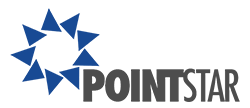Why higher education choose Cisco Meraki
Universities and colleges are the cornerstones of higher education. It is vital that these institutions provide the best facilities and environment for students to learn and experience. In order to meet those demands while providing wireless internet access to students, there are a few challenges that the higher education industry needs to tackle.
Security
The importance of student data privacy cannot be overstated. With the recent Facebook’s Cambridge Analytica scandal, it shows how valuable personal data is if it falls to the wrong hands.
Scalability
Universities can be huge with thousands of students enrolled at any particular time. So, they need solutions which can cater to a high number of users.
Content filtering
The World Wide Web can be a very good source of information for students but it could also be a source of distraction. Inappropriate sites need to be filtered and restricted from students.
Seamless deployment
Setting up a new network on a large scale is not easy. Solutions need to be implemented without disrupting administration and classes.
Minimal maintenance
The network maintenance needs to be simple, since not all universities and colleges have a big dedicated IT department. This would also drive the operational costs down.
Future proof
Budget constraints is one of the main challenges when it comes to network upgrades for universities. They can’t afford to spend money on technology as often as businesses. Therefore, a future proof solution is preferred.
One solution that ticks all the boxes is Cisco Meraki. The Meraki approach to networking is a revolutionary new design scheme, which simultaneously makes high-speed networks with nearly-infinite scaling potential, while providing the easiest administration tools in the business.
Benefits of Meraki network solution:
- The Wi-Fi technology is future-focused, utilising currently top-grade 802.1ac Wave 2 systems.
- Additional specialty devices, such as dedicated firewalls, can be added to the network at any time, with the same zero-effort installation procedures.
- The OS, system software, and any anti-virus/anti-malware systems are kept automatically updated via cloud systems, freeing admins of that particular responsibility.
- Security can be customised at a deep level of detail, including restrictions on certain apps (such as banning Facebook) or having entirely different permission sets for admins, teachers, and students.
- Content filtering packages are integrated directly into the software to simplify access restrictions.
- Meraki networks are 100% fully supported by Meraki for their entire useful lifespan. Lifetime defective hardware replacements, and unlimited technical support will be provided for as long as the devices are used.
Kaplan Singapore is one example of how higher education benefited from Cisco Meraki network solutions. Kaplan had an Active Directory for their staff and a Lightweight Directory Access Protocol (LDAP) for their students. So, two different systems were used to manage users on campus. With Cisco Meraki, these two systems are integrated under one SAAS called IronWiFi.
EAP based authentication was also implemented on Meraki so that user credentials can be stored on devices using certificates and users will be automatically signed into the Wi-Fi once they’re on campus. This allows seamless roaming across the whole campus.
They are no longer presented with a splash screen every time they want to sign in. They are also no longer presented with a time out which required them to keep signing into the Wi-Fi. This allows staff and students to focus more on their work and studies which increases their productivity.
Upgrading to Meraki also meant that a mesh network was set up in the entire campus. This helps with the resilience of the network. Meraki also enabled higher internet speeds of up to 1.7Gbps on a 5Ghz transmission frequency that ensured that staff and students with the latest laptops and smartphones could utilise the highest transmission speeds in the campus.
Kaplan’s IT department also had much less to manage. They could control and monitor all their Meraki devices on a single pane of glass through the cloud, making network maintenance simple and cost effective.


Leave a Reply